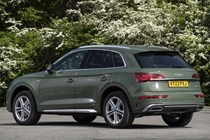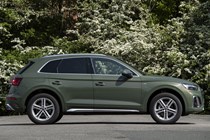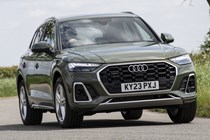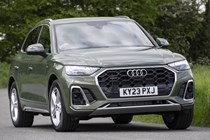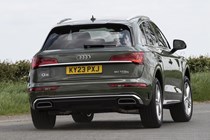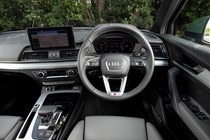Audi Q5 running costs and reliability
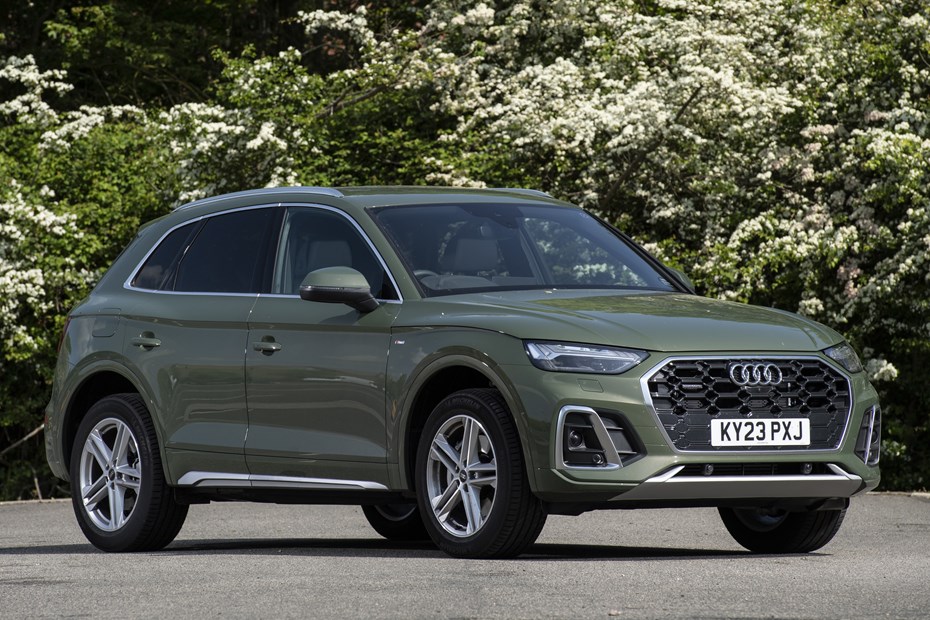
Miles per pound (mpp) ⓘ
| Petrol engines | 4.5 - 4.9 mpp |
|---|---|
| Diesel engines | 4.2 - 5.7 mpp |
| Hybrid petrol engines | 4.7 - 5.0 mpp |
| Plug-in hybrid petrol engines * | 4.8 - 5.2 mpp |
Fuel economy ⓘ
| Petrol engines | 30.7 - 33.6 mpg |
|---|---|
| Diesel engines | 32.8 - 44.8 mpg |
| Hybrid petrol engines | 32.1 - 34 mpg |
| Plug-in hybrid petrol engines * | 32.8 - 35.3 mpg |
- Plug-ins best for company buyers
- SQ5 is pricey to run
- Excellent residuals reduce cost of ownership
What are the running costs?
If you want a conventional petrol or diesel engine, then the Audi Q5 is available with one of each – a 45 TFSI petrol or a 40 TDI diesel. The 45 TFSI offers up to 33.6mpg and emissions as low as 191g/km, although this varies depending on trim level. This model has a 70-litre fuel tank, so a range of nearly 520 miles is possible if you hit that official economy figure.
The diesel has a 65-litre fuel tank and a 24-litre AdBlue tank. AdBlue is a system that helps reduce exhaust emissions, and the tank needs to be topped up every now and again – the car won’t run without it, and the trip computer will let you know when it needs refilling. Official emissions for this model are as low as 164g/km and fuel economy is up to 44.8mpg. That gives the car a range of up to 640 miles if you can achieve this.
We managed between 40-43mpg during our time with the 40 TDI, which is still enough for over 500 miles per tank. The diesel also benefits from mild hybrid technology that enables the stop-start system to activate sooner, when below 13mph, rather than at a standstill. There is also the ability to coast with the engine off over short distances, which did work quite often with us, and is claimed to function at speeds of up to 99mph.
The plug-in hybrid has impressive claimed economy figures. As ever, you’ll need to plug the car in regularly to achieve this, though. Our long-term model averages a disappointing 37mpg with regular long journeys thrown in. Nevertheless, low emissions of 35g/km mean it’s an appealing company car.
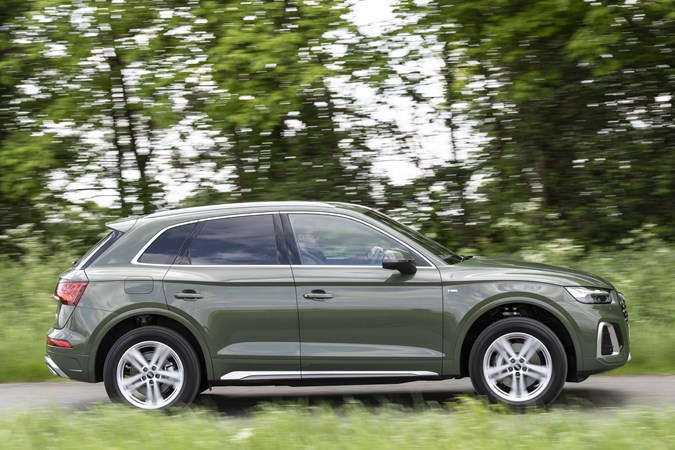
Quattro all-wheel drive is part-time on the Q5, so the engine predominantly drives the front wheels to conserve fuel, and only sends power to the rear over trickier road conditions. Audi says that the SQ5 will return up to 34.9mpg, while CO2 output is 213g/km. It’s worth noting that the Q5 Sportback returns the same fuel economy figures as the standard SUV, but emissions are very slightly higher. On the plus side, the Audi Q5 is a strong performer when it comes to residual values. Regardless of which Q5 you choose, after three years and 30,000 miles the price guides reckon the Q5 should be worth between 55-58% of its new price.
Servicing and warranty
While the cars themselves might not cost the earth to refuel, servicing at an Audi dealer is going to be expensive – but that’s typical across the premium car spectrum. You can get fixed-price servicing on your Q5, with up to a decade available through service plans. Routine services are reasonably priced, but for out of warranty and rectification work Audi dealers are relatively expensive.
Flexible servicing, recommended for long-distance drivers, can extend intervals up to two years or 19,000 miles. Lower-mileage drivers can opt for slightly cheaper fixed-schedule servicing at one-year, 9,000-mile intervals. Audi uses different formulations of oil for the different programmes. Transmission fluid should be changed every 38,000 miles.
Audi’s UK warranty is slightly confusing, in that it’s summed up as three years or 60,000 miles, but is actually made up of a two-year unlimited mileage warranty with a free extension to three years or 60,000 miles – in other words, high-mileage drivers with a typical three-year lease or PCP could run out of warranty while still in contract. Extended cover up to five years is available for a reasonable cost.
Reliability
- Proven mechanical components
- Well-made; feels solid
- A few recalls
There have been a few recalls for the current Audi Q5, with a couple in 2019 – one relating to potential wheelarch covers detaching and the other relating to the starter-alternator. Two more in 2020 involved the brake pedal travel increasing on a small number of vehicles and the backrest adjustment mechanism may be faulty on individual front seats.
Virtually every mechanical component has been proven in another Audi or Volkswagen Group car, though, so if any issues arise, parts should at least be plentiful and easy to replace. It’s also true that the first-generation Q5 proved reliable, although it was also subjected to four different official safety recalls.
Ongoing running costs
| Road tax | £190 - £600 |
|---|---|
| Insurance group | 25 - 46 |
Get an insurance quote with

|
|



